From thinking outside the traditional hotel room, to rooting their properties in localism, these hoteliers in Asia have broken new ground on the boutique hotel scene.
Sudamala Resorts, Indonesia
Family is behind the concept of Sudamala Resorts, which currently operates four suites and villas in exotic places in Bali, Lombok and Labuan Bajo.
As well, it was family that brought Emily Subrata, director of Griya Usaha, the owner and operator of Sudamala Resorts, to her hotel business.
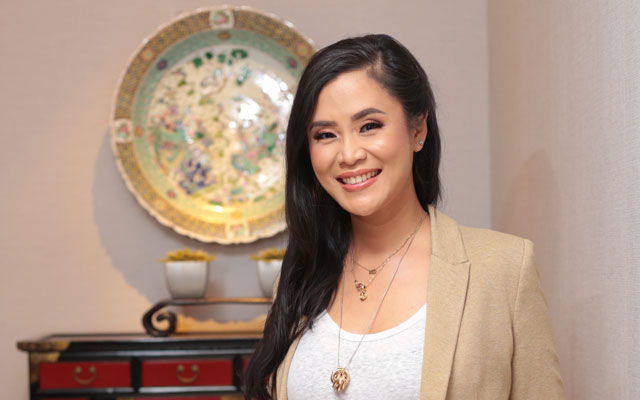
She said: “Sudamala Resorts is a family venture, so first and foremost, my raison d’etre is family. It has been my father Ben Subrata’s dream to own hotels, so it is an honour for me to be able to be a part of this business.”
Being Indonesian, she believes that hospitality is hardwired into her DNA.
“Hosting family and friends is second nature to every Indonesian. It’s in our blood, and to be able to build a livelihood around that is an opportunity too good to be true,” she said.
With the concept of the Sudamala project being rooted in family, everything from the planning process to the construction and service is personal.
“A lot of my family and friends have commented that Sudamala feels and looks like our family’s private homes, just much larger. Not only do we (provide) the intimate cosiness of a home, we also infuse local culture into each property’s design. For example, we brought in local Sasak artisans to create Lombok mother of pearl designs on our pool villas’ doors at Sudamala Suites & Villas, Senggigi.”
Despite the mushrooming of hotel developments in the areas where the Sudamala Resorts are situated, Emily believes the properties have carved out their own niche in an overcrowded market.
“We don’t want to just be about beautiful rooms and surroundings. Most importantly, we want our guests to walk away feeling like they’ve made a friend in us, and look forward to returning again. We strive very hard to be a bridge between our guests and the local community. What we offer is genuine connection,” she said.
The hotel brand continues to take its cues from the local community when curating its journeys, said Emily.
“Locals are an unpredictable, variable factor, but they are what make an experience so genuine. They know about their surroundings, and where we should go to get a genuine feel of the locale.
“In Sanur, Bali, for example, the oldest known artefact on the island is simply a ten minutes’ stroll from our flagship resort. The Blanjong inscription was established in the early 900s and was believed to be erected on the beach to commemorate a king’s military campaign. It is now located in the same complex as a temple in the local community whose priest comes to pray at Sudamala Suites & Villas, Sanur.”
Treeline Urban Resort, Cambodia
Architect Hok Kang is aiming to inspire a wave of homegrown hospitality brands with his innovative Siem Reap property, Treeline Urban Resort.
Located on a leafy stretch of Siem Reap River, Treeline opened in November 2018 and since then, has been championing the city’s sustainability movement, while aiming to elevate local hospitality levels.
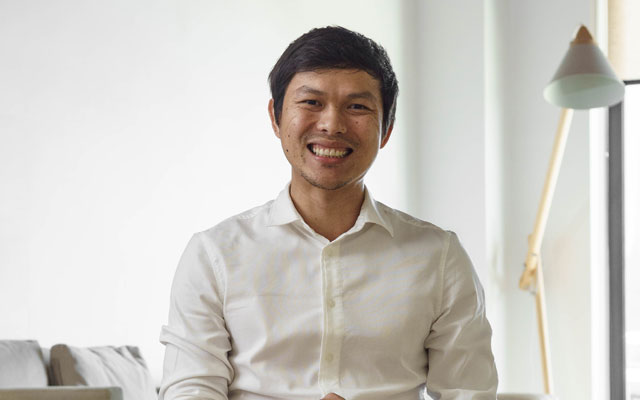
Hok said: “I thought, ‘What is the most recognisable hospitality brand in Cambodia?’, and I couldn’t think of many. I knew we had to give it a good design, build a strong team, and understand the product and hospitality.”
Determined to ensure that the boutique property stood out from Siem Reap’s crowded hotel market, design was key to Hok’s vision.
He also wanted to capture the essence of the city’s famed Angkor Wat, while showcasing contemporary Cambodia.
He said: “You have to know inside out what your brand is. The inspiration for the hotel took a long time. There are so many hotels (in Siem Reap) and so many are international. Siem Reap is so special and we wanted to create the feeling of old and new at the same time.”
The result is a stunning 48-room luxury property. Minimalist in design, the hotel boasts clean lines and a central courtyard home to manicured gardens and an exhibition space.
Nature features heavily, with trees dotting the outdoor space and tropical fauna running throughout. A second-storey infinity pool looks out over the canopy of trees that line the river, with sustainability sitting at the heart of the resort.
Added Hok: “With Treeline, we wanted to create something new and inspire other local hospitality groups to be innovative, creative with design, and incorporate sustainability.” – Marissa Carruthers
Amdaeng Riverside Hotel, Thailand
Sitting amid lush greenery on the banks of the Chao Phraya River, Amdaeng boutique hotel makes a strong fashion statement. The 10-room property has lately skyrocketed to fame in Bangkok’s boutique hotel scene – but even more awe-inspiring than its exterior is its backstory.
“We’re two creatives who dreamed of having a riverside property. When we finally got our hands on this plot of land, we began dreaming of what it could be. The plans got bigger and bigger until suddenly one day, we realised we had a hotel on our hands,” laughed its co-owner Passapol Limpisirisan, who set up the hotel with Wiboon Leepakpreeda.
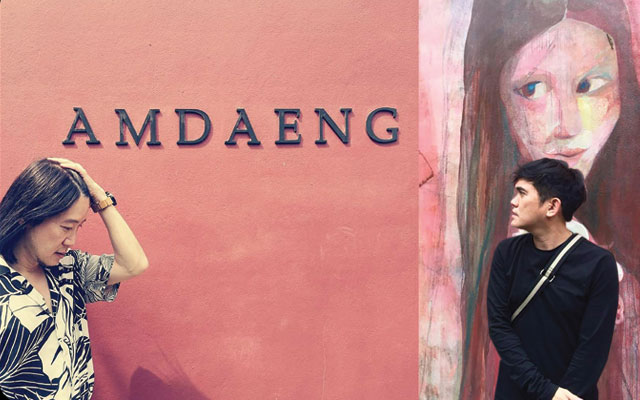
The creative duo is also behind Thailand’s award-winning advertising agency Monday, which they run concurrently with the hotel.
“For us, the biggest challenge was getting the design on point. We didn’t want to be another chain hotel. We wanted to find a way to differentiate ourselves,” shared Wiboon.
Recounting the process of designing the two-year-old boutique, Passapol said: “I think the architect must have felt a bit of apprehension when we handed him our concept board for the hotel. As creatives, anyone would expect that we’re not going to be easy to satisfy.”
Central to Amdaeng’s design are elements of Thainess, art and culture. Case in point: a 200-year old Pho tree on the plot of land remains where the hotel’s courtyard is today, at Wiboon’s insistence, even though ridding it would certainly have doubled their room count.
Instead, they planned for a swimming pool to be placed in the tree’s shadows – a pool the same shade as the oang or earthen jars that the ancient Thais used to bathe from. The scarlet red pool later earned them a spot on Booking.com’s 7 Unusual Pools Around the World article in 2018.
As well, Victorian-style gingerbread embellishments accent the hotel’s interior – a hybrid of Thai and European architectural styles harking back to Thailand’s golden age.
Passapol draws parallels between his dual careers in advertising and hospitality, especially in terms of client service.
“We still have to take care of our (hotel) guests, just as we do our (advertising) clients,” he remarked.
“Although we know that customers who come (to our hotel have) a love for the same things that we do, they also have very high expectations when they walk through that door – and that’s where our job as hoteliers begins.” – Anne Somanas
Sunset Valley Holiday Houses, Malaysia
Nestled on the Malaysian island of Langkawi, Sunset Valley Holiday Houses is poles apart from the corporate sugary fizz of Coca-Cola where David Bradley previously worked in various Australian and Asian locations.
During his time with the soda giant, Bradley spent three years in New Zealand, where he completed a part-time Diploma in Business and Industrial Administration at Auckland University, majoring in statistics.
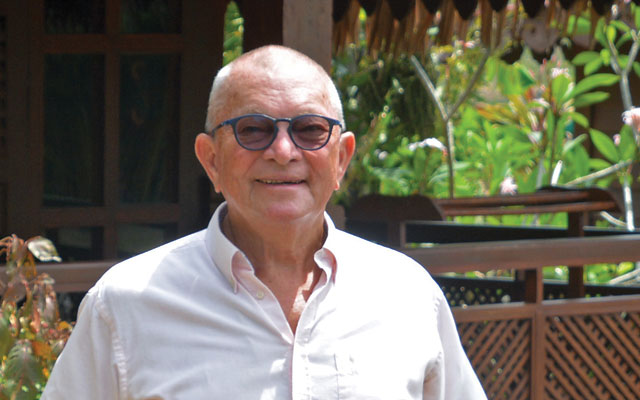
He worked in marketing in Australia and New Zealand before being posted by Coca-Cola to Bangkok. In 1982, he moved to Singapore after being head-hunted to join Carnation Company, and following the firm’s acqusition by Nestlé, took on the role of marketing and sales director for Malaysia.
In 1987, returning to Sydney to do his own thing, Bradley walked straight into that year’s stock market crash.
Retrenched, he turned to self-employment, becoming a tour guide with Great Divide Tours, Australia’s leading 4×4 operators, before setting up his own company Platinum Adventures.
After his first and successful foray into tourism, Bradley decided on a fresh start with his wife in Malaysia, where she had also previously worked.
The couple purchased a catamaran and in 2011, started a yacht charter business operating from Langkawi, taking guests around the Andaman Sea, with Thailand and Myanmar their playgrounds.
The couple eventually settled down in Langkawi and in 2012, purchased a partly built resort called Sunset Valley.
Eight years on, Sunset Valley Holiday Houses consists of six private heritage chalets – five of which are original Malay houses sourced from Langkawi and relocated to the property, before being rebuilt and renovated with modern bathrooms, kitchens, air-conditioning and furnishings.
Sitting at the foot of Langkawi’s tallest mountain, Gunung Raya, Sunset Valley is an eco-friendly operation that has adopted composting and recycling practices, while its natural setting overlooking paddy fields and a rubber plantation encourages wildlife.
Guests flock to Sunset Valley for the slice of serenity it offers, with the chance to commune with nature amid greenery.
Bradley shared: “Our guests love the location and the self-catering style of accommodation as they can come and go and explore the island as they like, use the well-equipped kitchen in each house (to whip up a meal), or barbeque and relax by the pool.”
Bradley and his wife have since discovered that Sunset Valley is the “real thing” in their lives. Looking ahead, they plan to build Balinese-styled luxury villas, each with its own swimming pool, on an adjacent parcel of land. – S Puvaneswary
Sleeep, Hong Kong
In hyper-dense Hong Kong, where cramped high-rises make up the city’s jam-packed skyline, space comes at a premium. This housing crisis was what prompted Alex Kot, co-founder of Sleeep, to start the city’s first licensed capsule hotel in 2016.
The idea was first born in 2014 when Kot and his partner took part in a competition to use design to solve cruxes posed by urbanisation. The duo floated the idea of a capsule hotel as a way to tackle shortage of space, sleep deprivation and high population density.
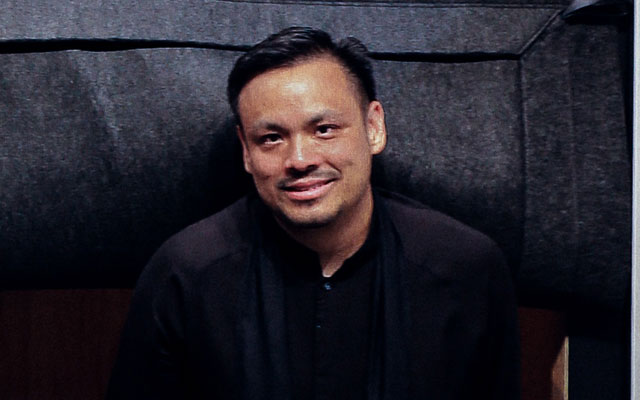
In addition to overnight stays, the hotel also sells quality sleep experience by-the-hour, and targets young urban travellers and office workers looking to catch some lunchtime shuteye.
What sets it apart from other hotels is its branding, patented innovation and technology. For instance, the hi-tech Sleeep experience is centered on an intelligent sleeping capsule called a SLPer that is comfortable, scalable and renewable. As well, its minimalistic-chic design has won it a Red Dot Design Award.
The current model of the SLPer is version 2.4 and features the latest R.E.M. (Responsive Environmental Modulator) technology, allowing guests to customise the environment inside their own capsule, including sound, lighting and air flow.
Three Hong Kong Sleeep outlets and a fourth in Bangkok later, Kot is still not resting on his laurels.
Apart from setting up capsule hotels, he has also been busy developing hardware and software technologies that aims to solve pain points of other hotel owners and operators.
He explained: “This is not new and we dedicated resources for R&D from the outset, i.e. reservation systems that was not commercialised, but there’s no better time than now to sell our infrastructure as a service to other hotel investors and owners who face pain points like manpower and cost issues.
“For instance, equipment, capsules plus our self-designed operations system that includes access control like QR code or facial recognition during check-in or out process; as well as booking inventory linked to cloud-based PMS to enable hourly booking so as to increase revenue.” – Prudence Lui
Hotel Soloha, Singapore
Sitting in a serene shophouse of vibrant cultural centre Keong Saik Road, Hotel Soloha’s personality is anything but quiet. The 45-room independent property, owned by founder Josh Hu, glows with a mash-up of artsy, neon and tropical vibes, with a smattering of local art and social spaces within its limited real estate.
Hu expressed: “We wanted to create a new hotel within the old whereby there’s a juxtaposition of heritage and modernity, and create a visual riot of colours and graphics for our guests once they step into the hotel.”
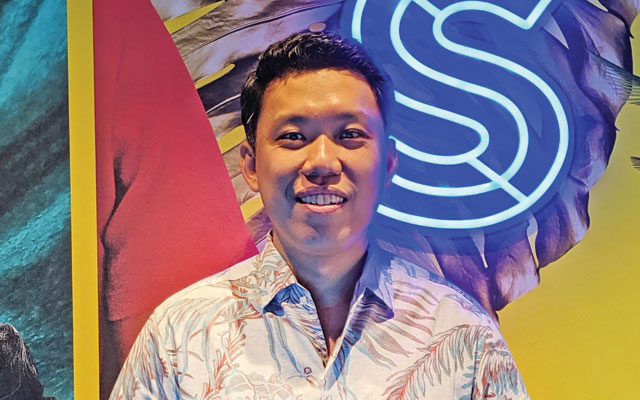
Hotel Soloha is like a friend’s chic abode. Guests are greeted at a check-in counter and bar in the cosy lobby, which shares the space with a lounge and noodle bar, as well as an armoire stocked with locally made trinkets for purchase. One can take in the sprawling art splashed across the hotel lobby, the entire lift shaft and in the rooms by local artists Ethrisha Liaw and Danielle Tay.
Each floor of the hotel is uniquely designed and themed according to the layers of a jungle – from forest floor to canopy – and features a “guardian animal”, such as the hornbill on the third level.
Hu explained: “We wanted to pay tribute to Singapore’s progress as a true metropolis and garden city. We found it most apt to create a mystical jungle within urban confines.”
The property shines in a time when more travellers are demanding affordable options, but which also offer convenience, style and local flavour. They have been “getting weary of the mass cookie-cutter hotels”, noted Hu, and are now “gravitating towards small hotels with good design, personalisation and that are located within interesting neighbourhoods”.
Singapore’s conserved shophouses are the perfect seat for such hotel concepts, but are limited in quantity. A golden opportunity was presented to Hu when a lot – where Chinatown Hotel once stood – opened. He said: “I was enamoured with the idea of creating a boutique hotel within conserved shophouses; Hotel Soloha was an opportunity to bring a fresh perspective to the market.”
As important as it was to convey the heritage and vibes of the surrounding Keong Saik and Chinatown precinct, Hu was wary of “being ornate and cliché”.
He said: “Modern travellers are discerning and well-travelled; they don’t need to see Chinese wordings and rickshaws in the lobby to feel (that) they are staying in a hotel near Chinatown. Instead, they would be keen to see a local interpretation of things universal and global.”
Although business has come to a standstill amid worldwide lockdowns, Hu is using the downtime to research and plan for new trends.
“We are taking the induced time off to look into new trends that we see resurging in the near-term: domestic demand, regional travels and virtual working arrangements. Therefore, we will be looking at realigning our target markets and improving on our technological offerings to entice the new generation of workers who can work wherever, whenever,” impressed Hu. – Pamela Chow
Hue Hotels and Resorts, Philippines
Siblings Dennis and Dexter Lee built Hue Hotels and Resorts with a foresight for design-forward and culturally-rooted properties interspersed with a sense of community empowerment and development that their family’s retail business is noted for.
As co-managing directors of Hue Hotels and Resorts, the Lee brothers run the hotel brand’s two properties in Palawan and Boracay.
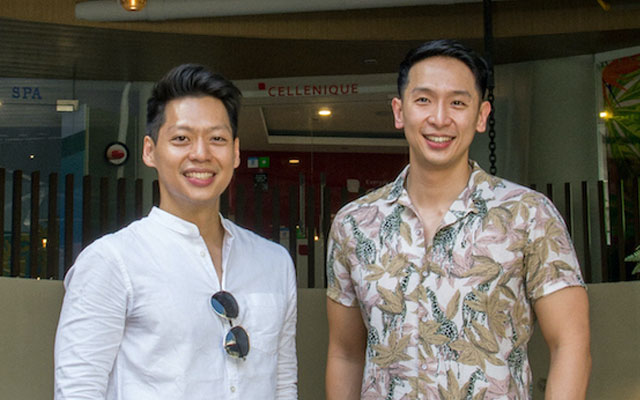
They also lead boutique community developer Lotus Development where they first learnt the tools of the trade by helming the company’s varied commercial projects.
Dennis said they picked the name Hue to reflect “the different shades of comfort and experiences” offered to guests.
Hue prides itself on being “glocal” by being relevant to a global audience, yet rooted in local culture and traditions.
“Each property has its own identity, which is inextricably connected to its locale… We wanted to inject the local colour to highlight the destination – the vibe of the place, what it’s known for, what draws travellers to it,” Dennis said.
“We made the conscious decision to make each property unique while still tying them together as Hue Hotels and Resorts with our quality of service and facilities and the local flair. It’s most apparent in the design, the architecture, and facilities.”
Thus, the 122-key Hue Puerto Princesa takes inspiration from Palawan’s lush greenery and natural beauty. Ground floor rooms are garden units where guests get a feel of nature even in their rooms. The swimming pool with glass side cantilevered on the rooftop offers stunning mountain vistas, while the mangrove roots patterns on the lobby floor evoke feelings of pristine Palawan.
Elsewhere, just like how Boracay offers a complete beach experience of diverse activities, the 127-key Hue Boracay touts itself as an all-in-one lifestyle destination. Housing dining, shopping and leisure experiences under one roof, the property is also home to a retail complex called Station X with homegrown brands in support of local entrepreneurs.
Dennis said that “glocal” is the driving force behind all their projects, which “is stemmed from our core purpose of gathering and growing local communities”.
And nothing is about to stifle that ambition of his – not even the ongoing global pandemic. The duo is in the midst of planning for a Hue flag in a major city to showcase the brand’s versatility.
Said Dennis: “It would also be a great opportunity for us to implement improvements, based on what we learnt from building the first two hotels.” – Rosa Ocampo




















